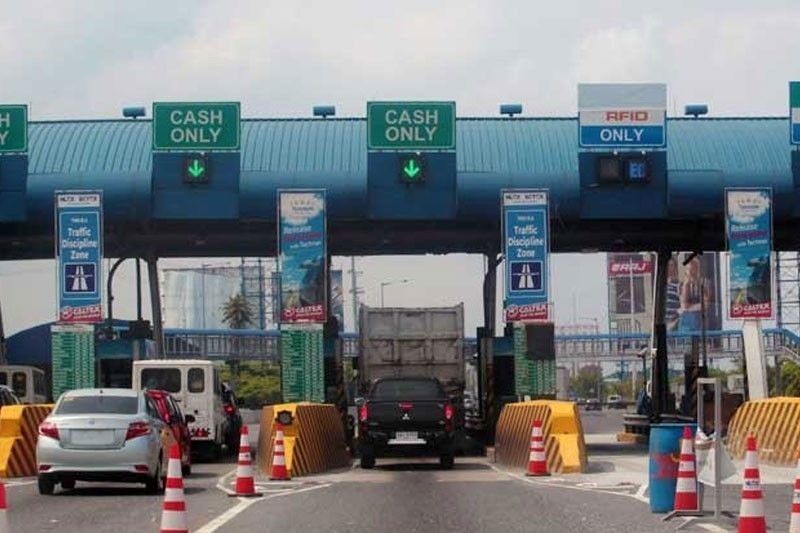Measuring the investment contribution of toll roads in the Philippines


Toll roads and expressways are nice and efficient on two grounds. One, they are safe and well-maintained, small vehicles like bicycles, tricycles, e-bikes, small motorcycles, tractors and kuliglig, are prohibited and thus, reduce the probability of road accidents. Two, they work on user-pay principle – only those who use it pay for it, thus taxpayers from the Visayas and Mindanao are not forced to pay for the construction and maintenance of expressways in Luzon.
The two largest infrastructure companies in the Philippines are Metro Pacific Investment Corp. (MPIC) and San Miguel Corp. (SMC).
MPIC has six existing toll roads and expressways: the North Luzon Expressway (NLEX), Subic-Clark-Tarlac Expressway (SCTEX), NLEX Connector; in the south are the Cavite Expressway (CAVITEX), the Cavite-Laguna Expressway (CALAX), and in the Visayas, the Cebu-Cordova Link Expressway (CCLEX).
SMC has five toll roads: the South Luzon Expressway (SLEX), Southern Tagalog Arterial Road (STAR), NAIA Expressway (NAIAX), Skyway (stages 1-3), and Tarlac Pangasinan La Union Expressway (TPLEX).
I am curious how to quantify the potential contribution of toll roads in a particular region’s growth. To measure this, I use the Philippine Statistics Authority (PSA) data on regional gross domestic product (RGDP) 2000-2023. Since overall GDP is rather broad, I limit the measurement to gross capital formation (GCF) or investments.
The busiest toll roads are the 84-kms long NLEX that opened to motorists in 1965, and the 50-kms long SLEX that opened in 1969. They cannot be used for this exercise because the baseline, 1960s, is too far away from available data from PSA.
Three toll roads have proximate contribution to investments with PSA data. These are the 94-kms long SCTEX that was opened to motorists in 2008, the 8-kms long SLEX toll road 3 that was opened to the public in 2011, and the 93-kms long TPLEX that started accommodating motorists in 2013.
The main beneficiaries of SCTEX are motorists and businesses in Region 3. Before its opening in 2008, Region 3 has average GCF growth of -8.3 percent in 2003-2007, then huge rebound of 24.6 percent growth from 2008-2012, then 13.7 percent growth in 2013-2017. In value at constant prices (2018 = 100), GCF in Region 3 was P111.5 billion in 2007, jumped to P309.8 billion in 2012, and further jumped to P585 billion in 2017. So it seems that the opening of SCTEX has contributed significantly to expanding investments in Region 3.
Motorists going to Region 1 are the main beneficiaries of TPLEX, they also benefit from SCTEX as extension of NLEX. The average GCF growth in Region 1 were 2.2 percent in 2003-2007, 17.6 percent in 2008-2012, and 16.5 percent in 2013-2017. In terms of value, investment level in Region 1 were P40.8 billion in 2007, doubled to P85.4 billion in 2012, and doubled again to P181.9 billion in 2017. So it seems that the opening of SCTEX then TPLEX have contributed significantly to expanding investments in the Ilocos region.
Motorists going to Region 4A (Calabarzon) are non-beneficiaries of SCTEX and TPLEX, but they benefit from SLEX extension like toll road 3. The average GCF growth in Region 4A were -7.4 percent (ie, contraction) in 2003-2007, low growth 3.9 percent in 2008-2012, and high recovery due to “base effect” of 38.7 percent in 2013-2017. Investments level in Region 4A rose from P151.7 billion in 2007 to P767 billion in 2017. So it seems that the opening of SLEX toll road 3 (connecting the main SLEX to STAR toll road) in 2011 has contributed to high investment expansion in Calabarzon region in the last decade.
There are many other factors that contribute to the expansion or contraction of investments in a particular province or region or nation, but the ease of mobility of goods and services or people via expressways is among the important ones. The numbers above show doubling if not tripling of investments after five years intervals.
The continued expansion and extension of expressways operated by both MPIC and SMC are good moves by these conglomerates because they greatly facilitate the movement of people and goods from north to south Luzon and vice versa. In the process these toll roads help attract investments and job creation, facilitate more trade and commerce with other countries.
Toll roads expansion is economic expansion. Infrastructure policies become economic policies. The government economic team can work closely with the government infrastructure team towards more Public-Private-Partnership (PPP) projects in the country.
Finally, I wish that MPIC will consider extending soon the current NLEX that ends in Sta. Ines, Pampanga up to Camiling, Tarlac, and even up to Alaminos, Pangasinan, known for the Hundred Islands resorts and national park. This will pass through the western side of Bamban, Capas, Tarlac City, Sta. Ignacia, and Camiling. Then parallel to the existing national highway all the way up to Alaminos passing near Lingayen, the provincial capital of Pangasinan.
- Latest
- Trending




























